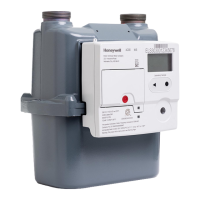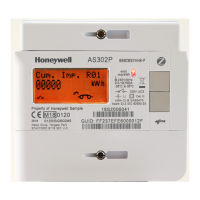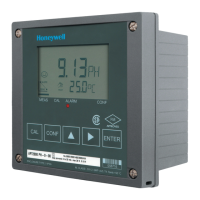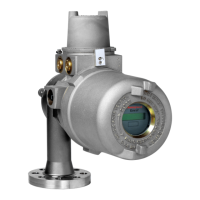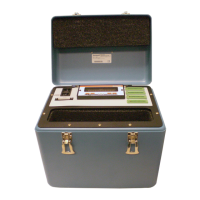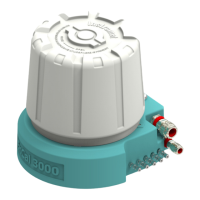40
3.6.4. Permanent calibration
3.6.4.1.
Controlling variables
The ACM 150 monitor eliminates or minimizes these variables so that their effects on
calculating the concentration are insignificant in the following manner:
• The path length is fixed at 5 m. All reference calibrations and analyses are adjusted in
your ACM 150.
• The resolution of the FTIR analyzer is set at four wavenumbers; all reference
calibrations and analyses use the exact four-wavenumber resolution. The FTIR
analyzer resolution can be changed but will cause error messages if operated at a
resolution other than four wavenumbers.
• Temperature and barometric pressure changes have a negligible effect on the gas
concentration and may ignored without affecting the accuracy of the ACM 150 monitor.
In this installation, the temperature should be nearly constant in an indoor office-type
facility. A cell heater should be added if there is a wide fluctuation. The potential effect
of changes in the sampled air's absolute “gauge” pressure is more significant than
temperature changes.
All reference calibration spectra are collected at 0 psig or 14.7 psia (1.0 atmospheric
pressure). The ACM 150 monitor uses an absolute pressure transducer to ensure all
analyses are done at 0 psig (14.7 psia).
• The relationship between concentration and absorbance becomes increasingly non-
linear as the concentration increases and approaches saturation (0 % transmittance).
• As the concentration increases from, for example, 300 ppm to 1000 ppm, the non-
linearity increases, and the accuracy of the reading decreases. The non-linearity
varies for each chemical, absorbance wavelength, and cell path length. For the
weakest IR-absorbing chemicals and long cell path lengths, the non-linearity may be
insignificant over the 0-1000 ppm range. For the most robust IR-absorbing chemicals,
readings over 100 ppm may be significantly non-linear and less accurate.
3.6.4.2.
Use of the background spectrum
Calibrations taken on one ACM 150 must be valid for computing accurate concentrations
on any other ACM 150. In that way, calibration spectra are also valid for all ACM 150s and
older models. This is accomplished using a reference (or background) spectrum to which
each analysis spectrum is ratioed. The ACM 150 monitor collects a reference spectrum
every 2 hours while the gas cell is filled with nitrogen that is void of any monitored gases.
Each air spectrum collected for the next two hours is ratioed to the latest reference
spectrum. If the gas composition of the air were identical to the background, the result
would be a flat line on the x-axis. All variables affecting the spectrum are canceled this
way because each air spectrum has the same characteristics as the reference spectrum.
This cancels the effects of the FTIR detector's drift, IR source intensity changes, reduction
of IR radiation in the gas cell as particles accumulate, etc. Each of these variables changes
slowly and has no effect on the accuracy of the measurement over two hours. This has
been verified over years of application experience.
With “instrument error” canceled by the background reference, the only factor affecting the
amount of absorbance at any wavenumber is the concentration of the vapor phase
chemical that absorbs at that wavenumber. If no gas is present, the absorbance will be 0,
i.e., a flat line on the x-axis. If the gas is present, it will absorb directly to its concentration.

